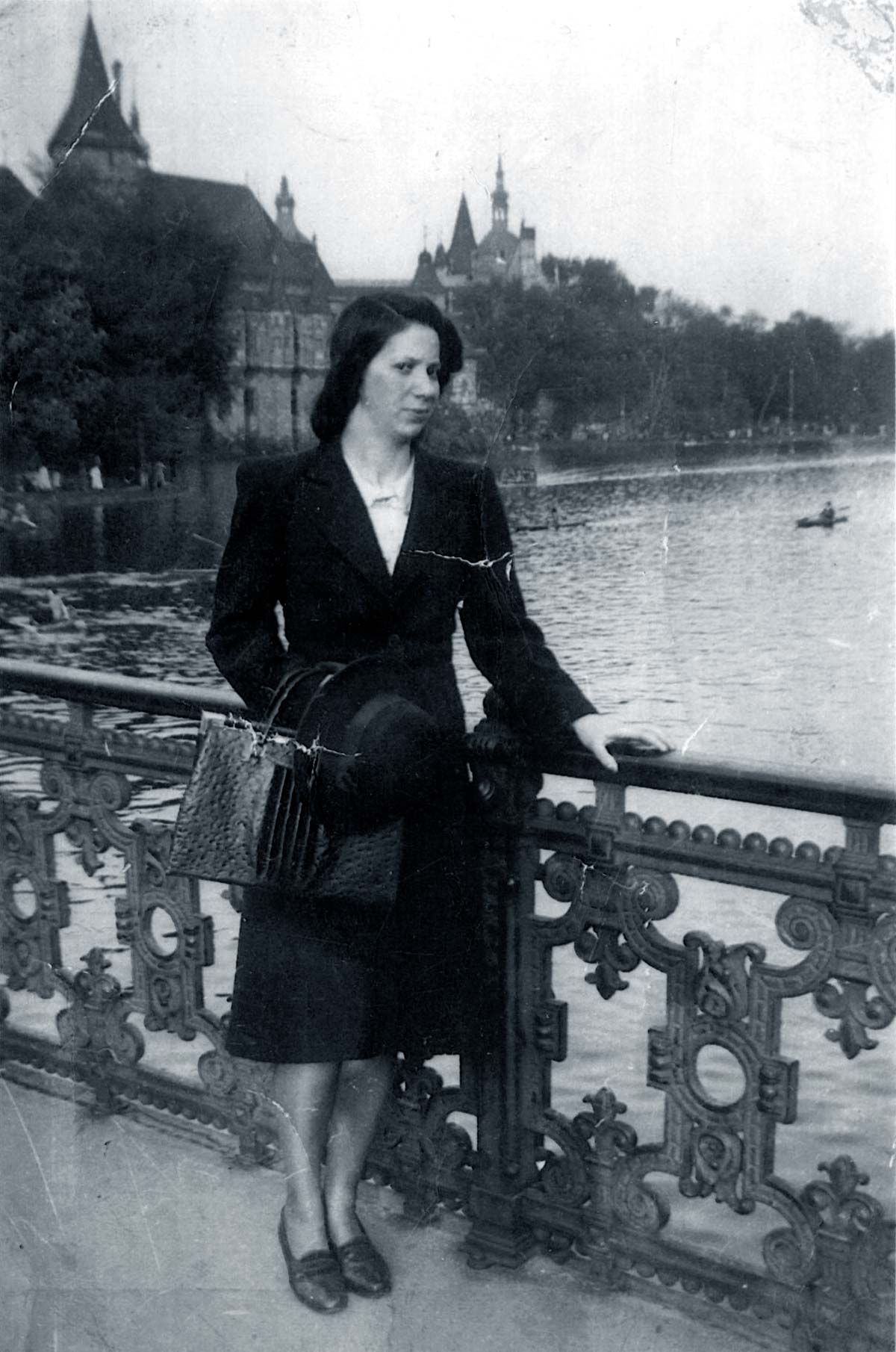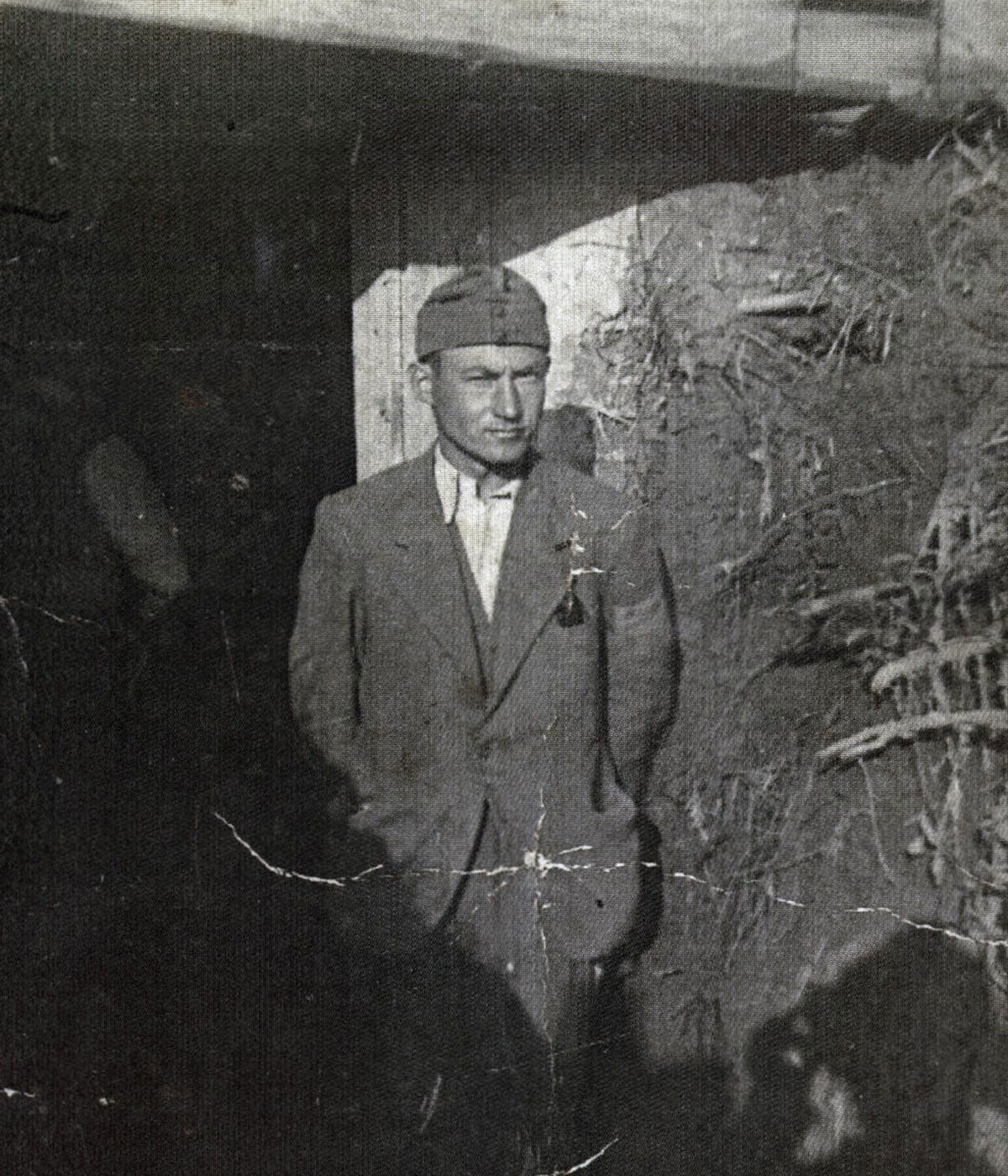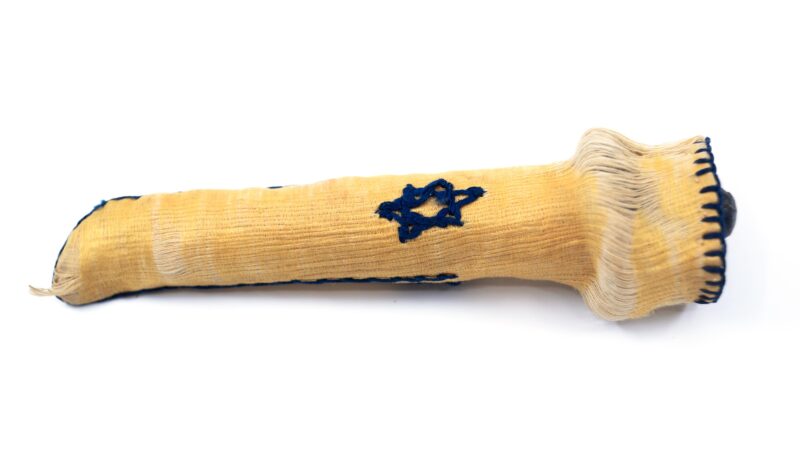
Eva Zaret
What you can see is what remains of my armband.
I was forced to wear it by the Nazis who wanted to mark me and my family for destruction. It was supposed to be a symbol of shame and of hatred.
I had to wear this yellow marker when I was just eight years old and the Nazis swept into my hometown of Budapest, Hungary. By 1944, when they arrived, they were very efficient at transforming a city into a landscape of terror. We were forced to move into a ghetto. Dozens of people were packed into small apartments as the Nazis squeezed us for labor, kept food from us, and shipped thousands of Jews to Auschwitz. We weren’t allowed to go to school or travel anywhere without the permission of the Nazis. In the ghetto where I lived, I remember people dying of hunger and illness. I remember bodies piling up in the basement. I remember the radio. Every word was bad news, but it was the only way to find out what was going on. And sometimes it saved our lives.
Every day, Nazis would come into the ghetto and select people for transport. This meant, we found out later, that they were being sent to Auschwitz and straight into the gas chambers. My mother and my aunt would work outside the ghetto in gravel pits. Hard, strenuous work for which they were not paid. But it kept them from ‘selections’.
One day I remember quite well. Everyone in the camp was told that all women of a certain age had to report to the train station. They were told that they would be making bricks rather than doing whatever other job they might have had. My mother left me in the morning as she did every day. Soon after, I heard that women whose husbands were working in the Bor mines did not have to go to this new assignment. I rushed out to find my mom in the big city, Somehow, I found her in a long line of women. She was terrified to see me out in the streets, but I told her what I’d heard and a man guarding the women confirmed it was true. She came back with me to the apartment and we learned later that all those women were taken to Auschwitz.
This one moment in which I saved my mother’s life is the only time I can remember when soldiers didn’t treat us like animals. In every other instance they abused us, beat us, or simply killed us. Many of my family members were shot into the Danube. Even more were sent to the gas chambers. Some died of hunger or illness. The Nazis didn’t care.

Even before they arrived, their influence was felt. My father was taken to the Bor mine when I was just four years old. The Nazis wanted to use the mine for their war effort and they were looking for cheap labor that they could work to the bone. He worked in the Bor mine for three years. As the Germans began to lose the war, they decided to evacuate everyone from labor camps and concentration camps. Men in the Bor mine were forced into a death march. When people were too weak or sick to carry on, they were shot and killed. My father didn’t survive the death march. This picture is one of the only tokens I have of him.
My mother, my grandmother, my aunt and I were the only members of our family to survive. Everyone on my dad’s side was murdered. Most of my other relatives ended up in Auschwitz. I was lucky, somehow.

After the war ended, I was very sick and it took me months to recover. Eventually, I felt good enough to travel and I left Budapest with my aunt. We fled the ‘liberation’ of the Soviets because it didn’t feel much better than the oppression of the Nazis. There were no jobs for Jews and the Stalinist government made it hard to come by enough food in the big city. My mother was worried that we might starve. So, she sent me away with my aunt and we went to the Carpathian Mountains. And it was there, in the destroyed town of Vinogradov (present-day Ukraine) that I found a tiny Torah scroll in the rubble of the village. I felt so many things at once. I was joyful for being alive. I was confused about why I was separated from my mother. I was mourning the loss of my father and his whole family. I was furious that so much had been taken. I was angry with G-d.
When I found that tiny Torah scroll, I decided to give my armband a new purpose. I said to G-d, “I wore this star, you wanted me to wear this star; now you can wear the star.” As a small girl, I had been forced to carry this hatred for years. Now, it was G-d’s turn to carry the weight of antisemitism. If he had allowed this to happen to my family and my community, it seemed only appropriate that he bear the burden of this symbol of hatred. No longer would it mark me for destruction. Instead of dehumanizing me and other Jews, I decided I would use it to protect the most important part of Jewish identity: this little Torah. I also thought it was the right thing for G-d to do.

I stayed in the Carpathian Mountains. Partly because we had to. This Ukrainian town had become part of Russia and they closed the borders. So, we built a life for ourselves there. I found my way as a young woman. I went to school. I fell in love. I got married at 17 and had my first daughter, Judy, when I was 18. It was because of her that we applied for a passport to go back to Budapest to visit family. In the fall of 1956, we used our passport to cross back into Hungary and it was almost immediately that the Hungarian Revolution broke out. The chaos of that moment was difficult to imagine and created a whole new wave of disturbance and disorder for the people of Budapest. It was like the war was happening all over again.
Eventually my family and I left Budapest, but we didn’t head back to Russia, because we knew that tensions between Russia and Hungary were too high to be safe. Instead, we went to Vienna where we waited for a working visa to emigrate to the United States. On December 25th, 1956, we boarded a ship and landed in New York on January 7th, 1957.

Here in America, feeling a sense of freedom and home that I hadn’t felt since I was a little girl, I began to commit myself to my community. For my day jobs I worked as a hairdresser and later would become a dental technician. What really motivated me, though was my work with different Jewish agencies helping to get refugees, immigrants and others on their feet. When I came out of the ghetto, it was the Joint Distribution Committee that gave me my first piece of bread. I knew their work and how important and impactful it was for me and I wanted to give back in the same way. I started to organize and fundraise for the Organization for Rehabilitation through Training (O.R.T.). This Jewish agency is dedicated to helping people after tragedy strikes. I saw people coming to O.R.T. who were exactly like me. They had been through a lot, they had seen many terrible things and they were just in need of a little support. I wanted to help provide that to them.
I was part of telethons and fundraising campaigns, I helped support the workers and the families in any way that I could because I believe that the organized Jewish community is so important. We have suffered so much as Jewish people, but when we are organized we are stronger. History tells us this too. We are the wandering Jews, we have been forced to wander all over the world for thousands of years. We need to support one another because we are one people, even though we have so many different dimensions. We are a surviving ancient people.

Through my work I eventually became the co-chair of the Milwaukee Jewish Federation community delegation to the United Jewish Communities General Assembly in 2005. It was a great honor to represent Milwaukee and to be part of a larger, global Jewish community.
Today, I continue to build community as a member of my synagogue, as a member of the Jewish Community Center, and as a speaker for the Nathan and Esther Pelz Holocaust Education Resource Center. It was only in 2018 that I started to share my story with the public, but now I feel like it is part of my life’s work. Every time I do, I feel that it helps connect the Jewish community back to this moment of trial and survival. And it also helps people in my state and city understand the Jewish community at a deeper and more intimate level. It is important that the Jewish community and the non-Jewish community understand one another. Our sickness comes from our ignorance. So, me being able to share my life with school children and adults who have no understanding of the Holocaust makes me feel like I am still part of building a community.
Like the Torah scroll cover, I am finding new ways to sew new meaning into my life and stitch together parts of my past that make me, my family, and my community stronger.












